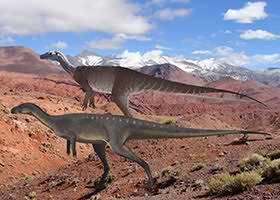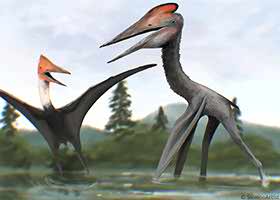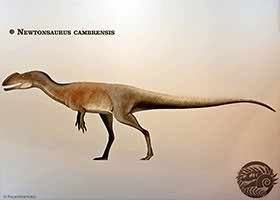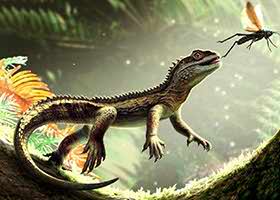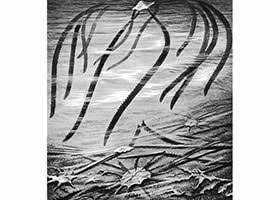
The early evolution of sauropodomorphs comes into focus through the discovery of Huayracursor jaguensis in the Argentine Andes, one of the oldest dinosaurs in South America. Moreover, this small Triassic herbivorous animal reveals that the increase in body size and neck elongation began much earlier than previously thought. These traits marked the first steps toward the giant dinosaur lineage.
I. The Birth of Giants: Early Evolution of Sauropodomorphs
In the late Triassic, more than 230 million years ago, the supercontinent Pangea united nearly all the planet’s landmasses. The climate was notably warm and humid, particularly in the regions that are now part of South America. Here, in the lowlands of ancient rivers and lakes, the first groups of dinosaurs emerged. They included the ancestors of the future giants—sauropods.
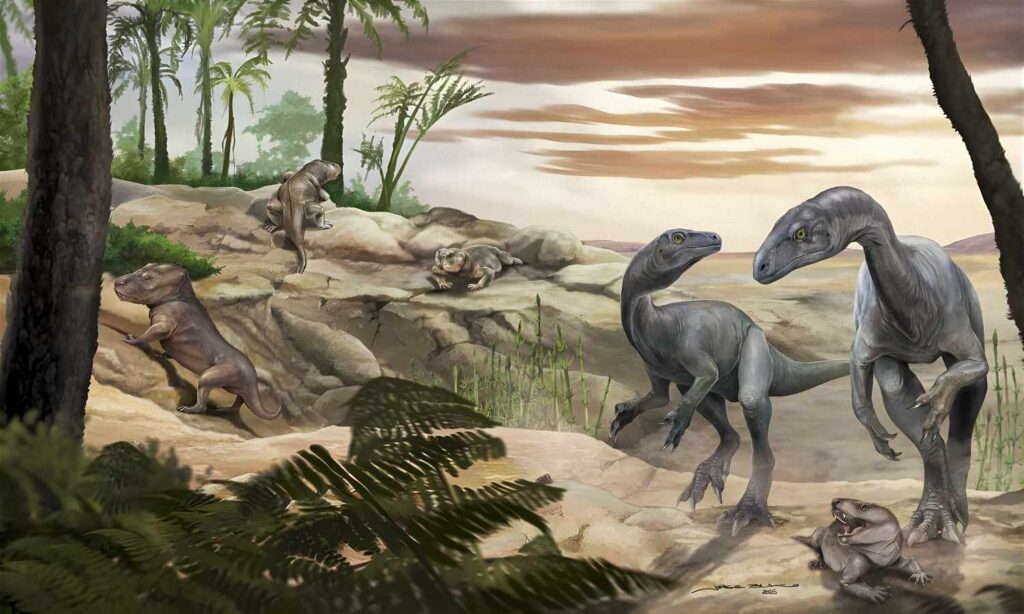
Argentina is a crucial region where nature has preserved evidence of this era. Triassic deposits reveal the remains of small, lightweight, and agile bipedal dinosaurs. Gradually, traits such as an increase in body mass, neck elongation, and a shift to herbivory began to appear. These changes reflect the early evolution of sauropodomorphs. Consequently, they mark the beginning of the history of the largest land animals of all time.
II. Huayracursor jaguensis: The Trail of the Wind Runner
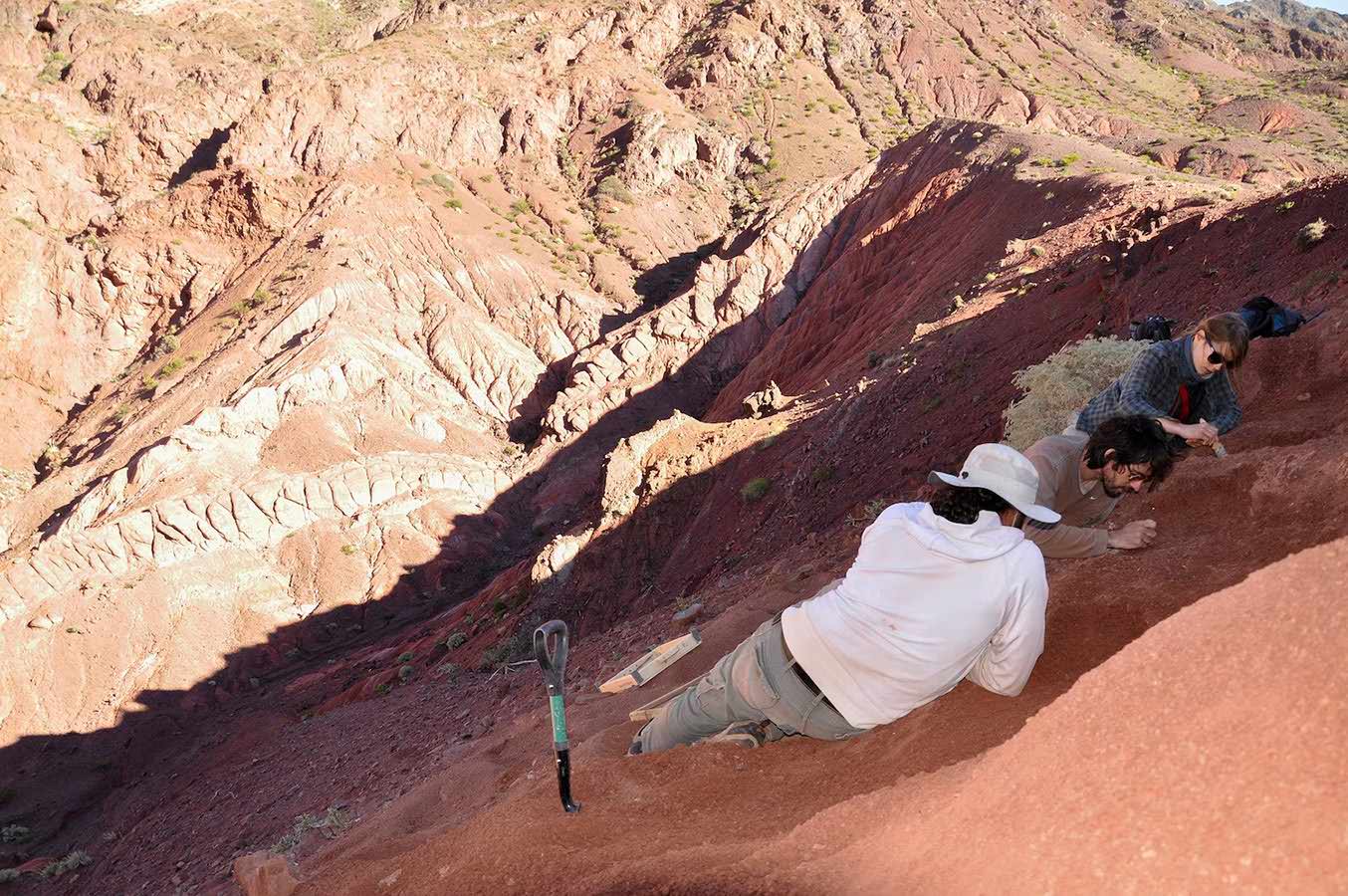
The discovery of Huayracursor jaguensis in the Argentine Andes significantly advances our understanding of the early evolution of sauropodomorphs. It is one of the oldest dinosaurs in South America. Previously, major discoveries were limited to the Ischigualasto-Villa Unión in western Argentina and the Paraná basins in southern Brazil. However, a new fossil-rich Late Triassic assemblage was uncovered at Santo Domingo Creek in northwestern Argentina, within the Northern Precordillera Basin.

At an elevation of about three thousand meters, paleontologists led by Martín Hechenleitner found a nearly complete articulated skeleton. The fossil has been preserved almost completely. Researchers unearthed parts of the skull, a complete spine extending to the tail, and intact limbs.
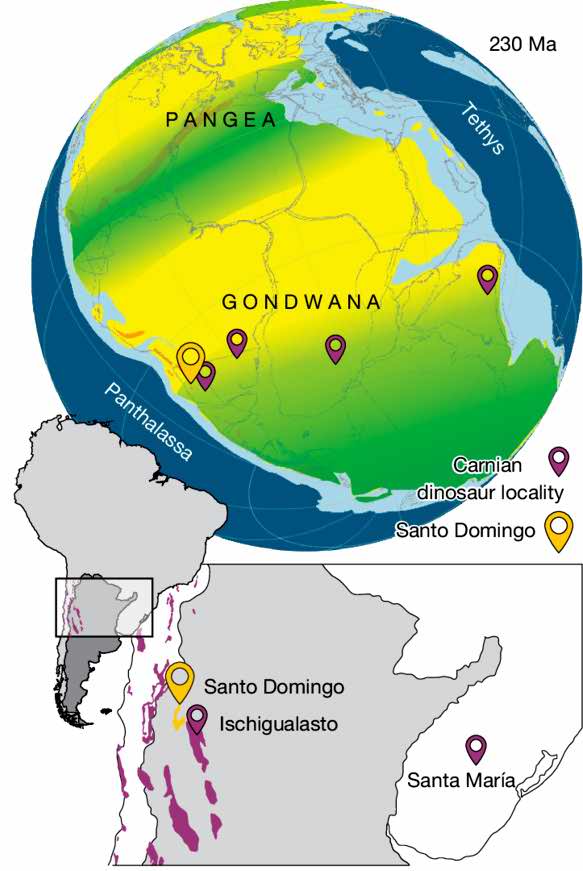
The discovery comes from the Carnian layers of the Santo Domingo Formation in La Rioja province. Its dating places it at 225–230 million years ago, among the earliest stages of dinosaur existence.
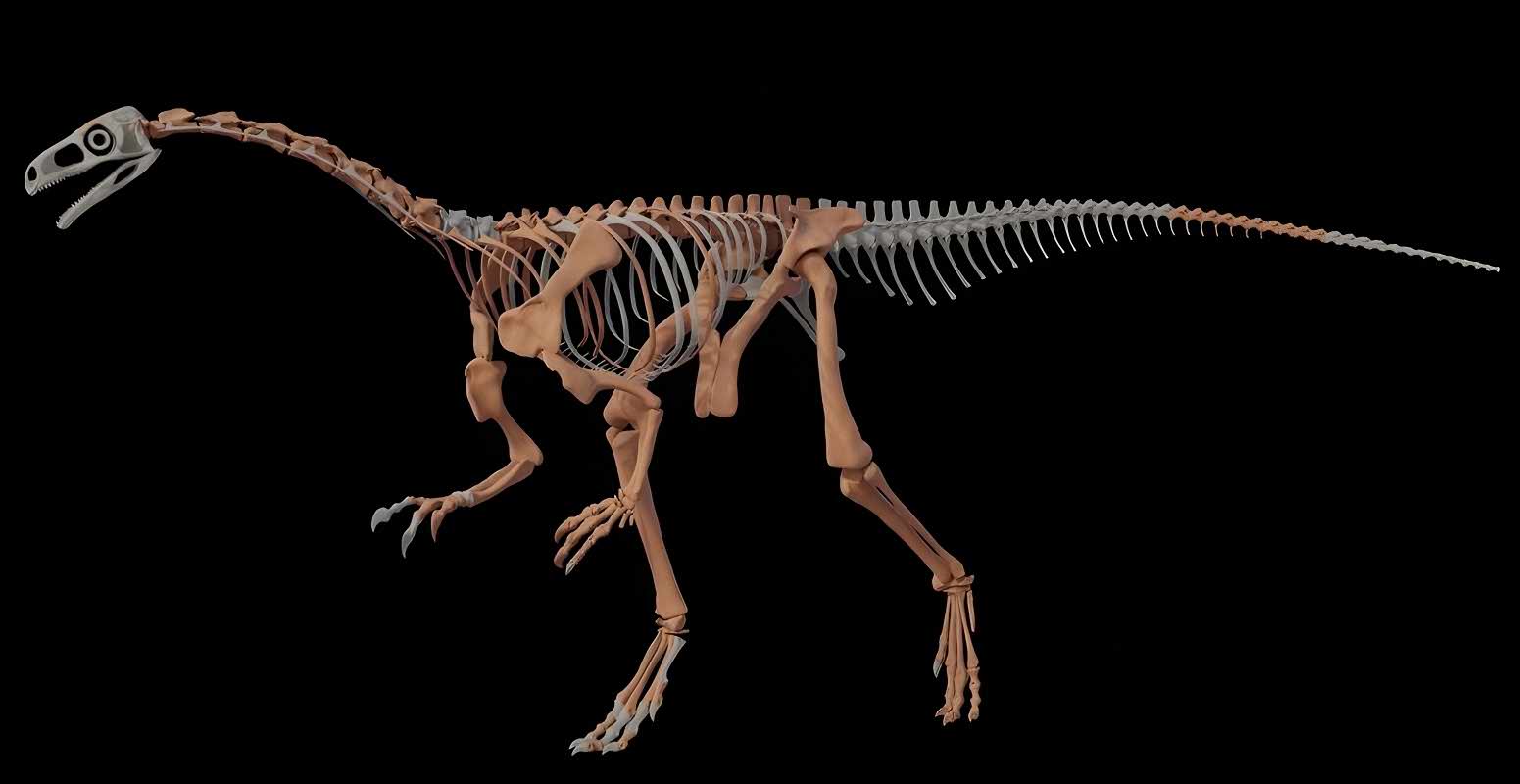
Despite its modest size, Huayracursor was a slender and active herbivore. It reached about two meters in length and weighed approximately 18 kilograms. In fact, it was relatively large, nearly twice the size of other early dinosaurs in the region. This dinosaur had a small skull compared with its contemporaries. It also had more graceful limb proportions, robust hind limbs, slender hips, and short arms.
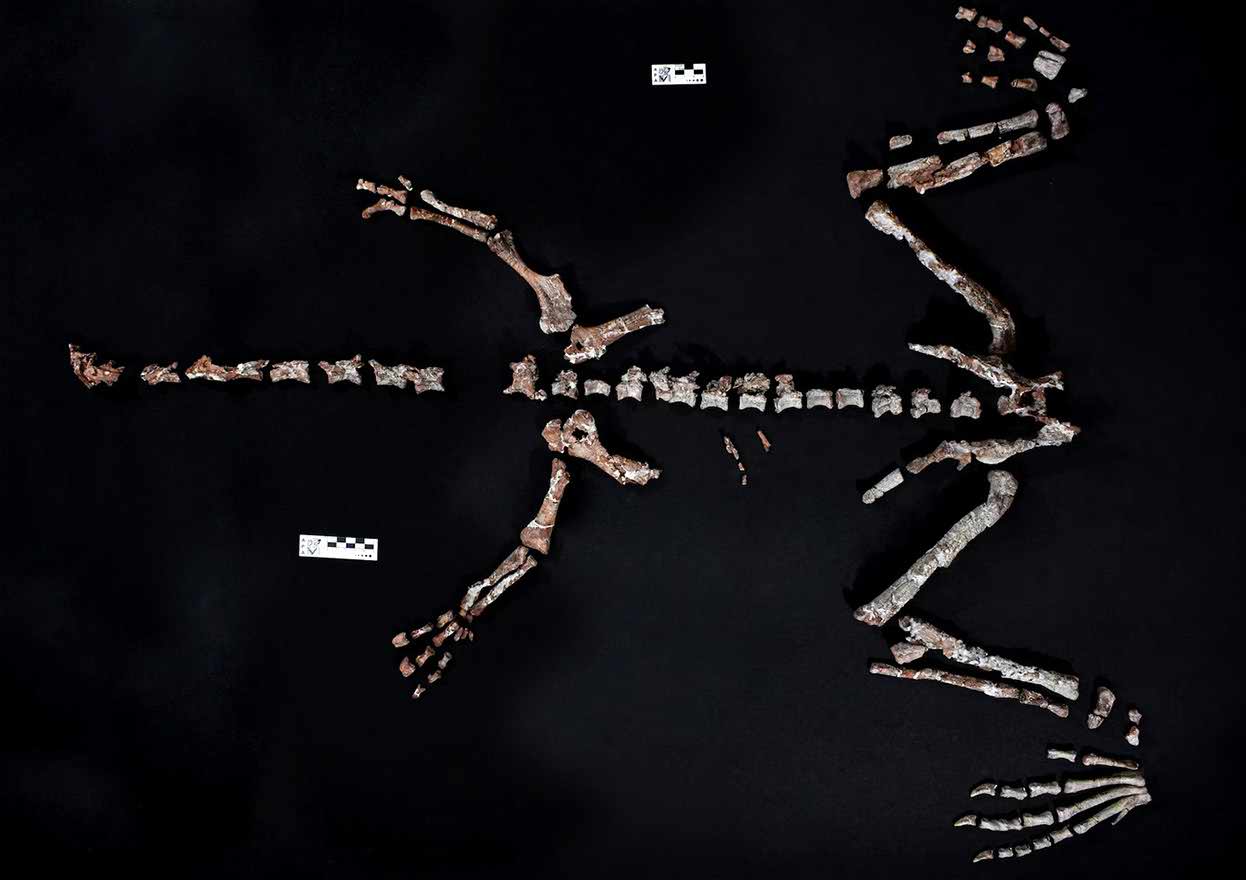
The generic name Huayracursor comes from the Quechua word huayra (“wind”) and the Latin word cursor (“runner”). The species carries the name “jaguensis,” taken from the nearby village of Jagüé. Thus, its name literally means “wind runner from Jagüé.”
The genus of this sauropodomorph dinosaur contains only one species.
This discovery provides a new perspective on the early evolution of sauropodomorphs. Furthermore, it allows researchers to trace the first steps on the path to gigantism. It also clarifies that dinosaur fauna was more widely distributed and ecologically diverse than previously thought.
III. An Intermediate Form and Early Adaptations
Unlike its Carnian relatives, Huayracursor had longer cervical vertebrae and a noticeably robust body. These features represent an intermediate stage in size and neck elongation between known Carnian and later Norian sauropodomorphs. Previously, researchers believed that the evolution toward gigantism manifested only during the Norian age. Nevertheless, Huayracursor jaguensis demonstrates that the trends toward growth and specialization had already appeared earlier. These morphological changes ultimately led to the emergence of true giants like Riojasaurus and Plateosaurus within just a few million years.

Scale bars: 10 mm (b–e, j–o); 20 mm (f–i, p–r).
amp—ambiens process; asp—ascending process; ax—axis; bs—brevis shelf; bu—bulge; clp—collateral ligament pit; clt—caudolateral process of the tibia; cmc—craniomedial crest; co—coracoid; db—dorsal basin; dc—deltopectoral crest; dlt—dorsolateral trochanter; dp—diapophysis; ff—fibular facet; fo—foramen; gl—glenoid; mcI—metacarpal I; mtI—metatarsal I; mtV—metatarsal V; ns—neural spine; oc—occipital condyle; or—orbital region; pap—preacetabular process; pop—paroccipital process; poz—postzygapophysis; pp—pubic peduncle; prz—prezygapophysis; pu—pubis; ra—radius; sac—supracetabular crest; sc—scapula; ts—trochanteric shelf; ul—ulna; vk—ventral keel. © Hechenleitner et al.
Huayracursor occupied the niche of a mid-sized herbivore. The gradual elongation of its neck expanded the range of accessible plants. As a result, it gained a significant feeding advantage. While its smaller relatives were limited to low-growing plants, Huayracursor could also feed on leaves, shoots, and cones. It reached the tops of bushes and accessed food sources unavailable to other terrestrial herbivores. By exploiting new food resources, this dietary flexibility played a key role in the early evolution of sauropodomorphs.

Phylogenetic analysis by Hechenleitner demonstrated that Huayracursor is one of the earliest and most primitive representatives of the clade Sauropodomorpha. It is a sister taxon to Bagualosaurus. Together, they form the earliest branch of the basal clade Bagualosauria. This highlights the discovery’s significance, as it captures a transitional state between small bipedal forms and the future massive sauropods.
The presented cladogram illustrates these results:
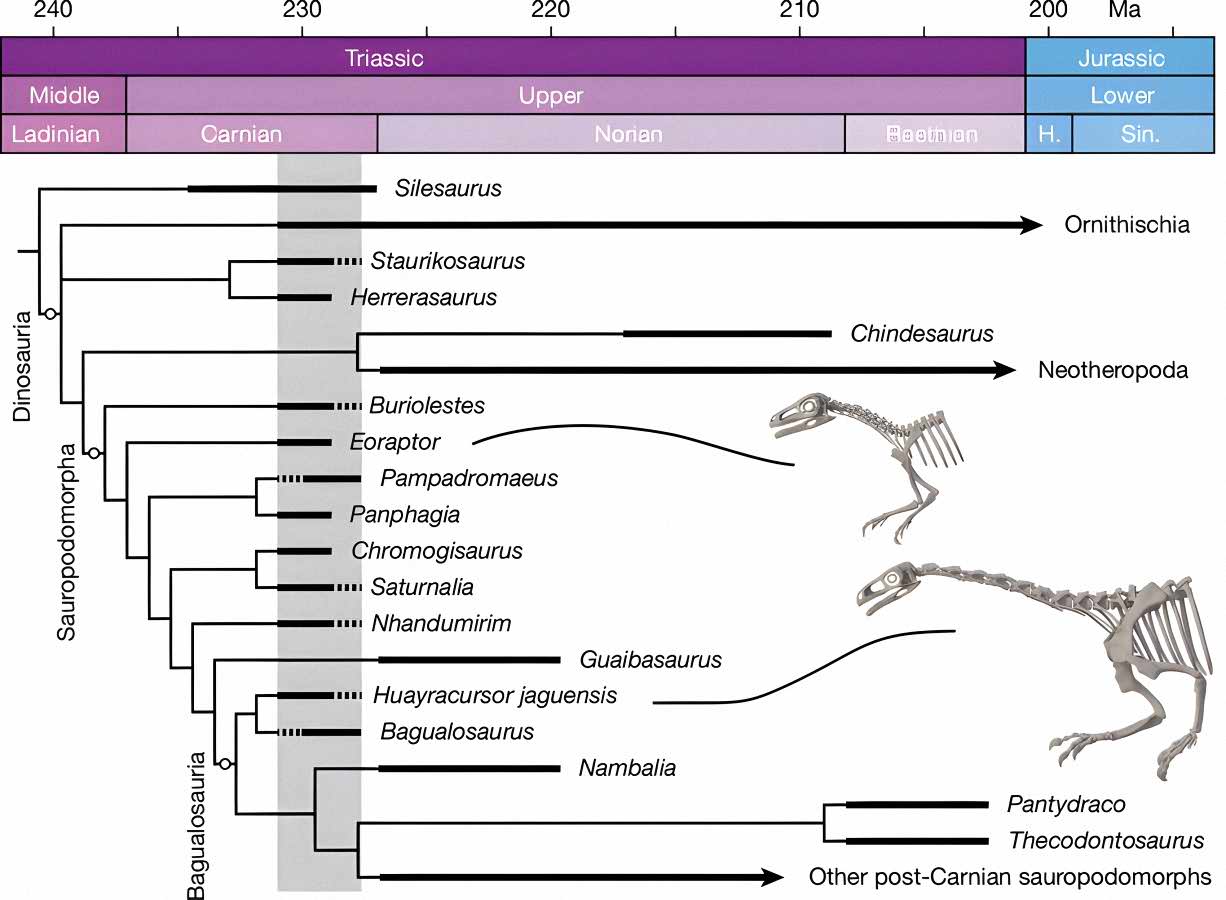
IV. Ecosystem of the Carnian World
The Carnian age of the Triassic period (approximately 237–227 million years ago) was a time of dramatic changes. The Northern Precordillera was not the dry, rocky mountain desert it is today. Back then, South America stretched out as a vast, humid plain with heavy rains, where rivers, lakes, and floodplains spread across the land. The warm climate fostered dense vegetation, including conifers, cycads, and tree ferns.
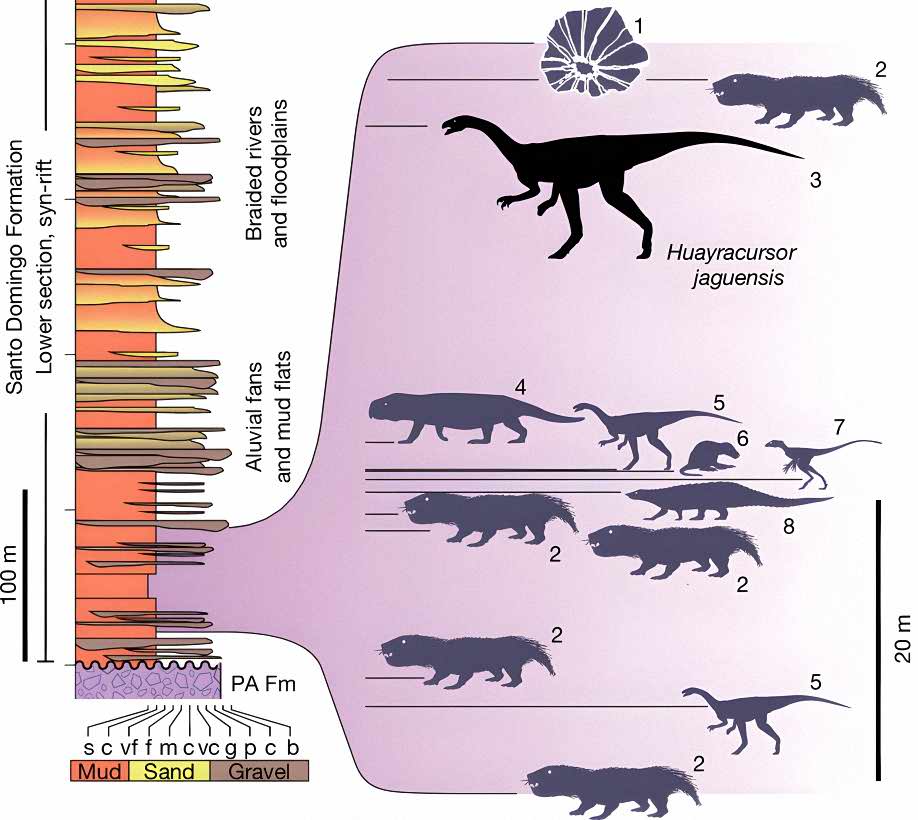
Radical changes on Pangaea profoundly influenced all ecosystems. They led to the emergence, development, and spread of the ancestors of mammals, crocodile-line archosaurs (crocodilomorphs), and the first dinosaurs. Subsequently, dinosaurs underwent significant radiation and dominated the planet until the end of the Mesozoic era.
Discoveries in the Andes, within the Santo Domingo Formation, significantly expand the paleontological picture. These ecosystems were home to numerous late Carnian vertebrates. They included herbivorous hyperodapedontine rhynchosaurs, early mammal relatives (traversodontid cynodonts and probainognathians), and heavily armored aetosaurs.
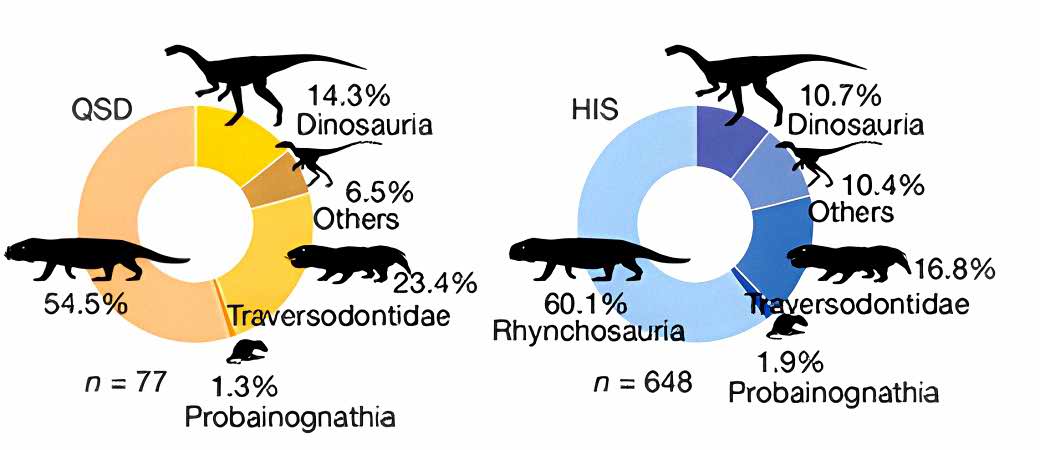
A variety of early dinosaurs was also present, such as ornithopods, herrerasaurids, theropods, and sauropodomorphs. All sauropodomorphs at this stage were still small, short-necked, bipedal forms. Among the other animals coexisting with Huayracursor was the small predator Eoraptor. Soon after, by geological time standards, much larger dinosaurs appeared in the same La Rioja region. Riojasaurus already reached lengths of 10 meters.
V. From Bipedal Forms to the Giants of Gondwana
The discovery of Huayracursor jaguensis convincingly demonstrates that the trend toward gigantism emerged much earlier than previously assumed. This small bipedal dinosaur lived alongside its smaller relatives. Yet, it already exhibited traits characteristic of future sauropods: a more massive body, an elongated neck, and refined limb proportions. A few million years later, larger forms appeared in the same lands. They eventually gave rise to colossi like Argentinosaurus and Patagotitan.

Consequently, Huayracursor is a crucial piece of evidence for the early stage in the transition from lightweight bipedal dinosaurs to the giants of Gondwana. Martín Hechenleitner notes, “Huayracursor drags the origin of the long neck and larger body size towards the first appearance of dinosaurs in the fossil record.” Indeed, the existence of Huayracursor confirms that the origins of the power and grandeur of the later sauropods trace back to the very emergence of this remarkable lineage. They reach to the roots of the early evolution of sauropodomorphs.
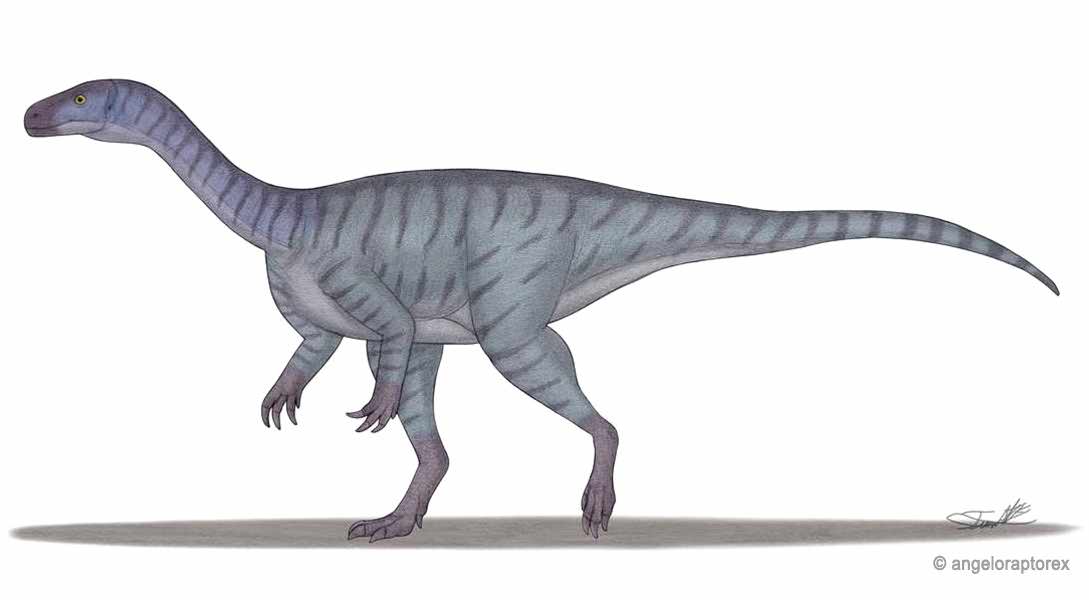
The journal Nature published this discovery in the following article:
Hechenleitner, E.M., Martinelli, A.G., Rocher, S. et al. A long-necked early dinosaur from a newly discovered Upper Triassic basin in the Andes. Nature (2025). https://doi.org/10.1038/s41586-025-09634-3













